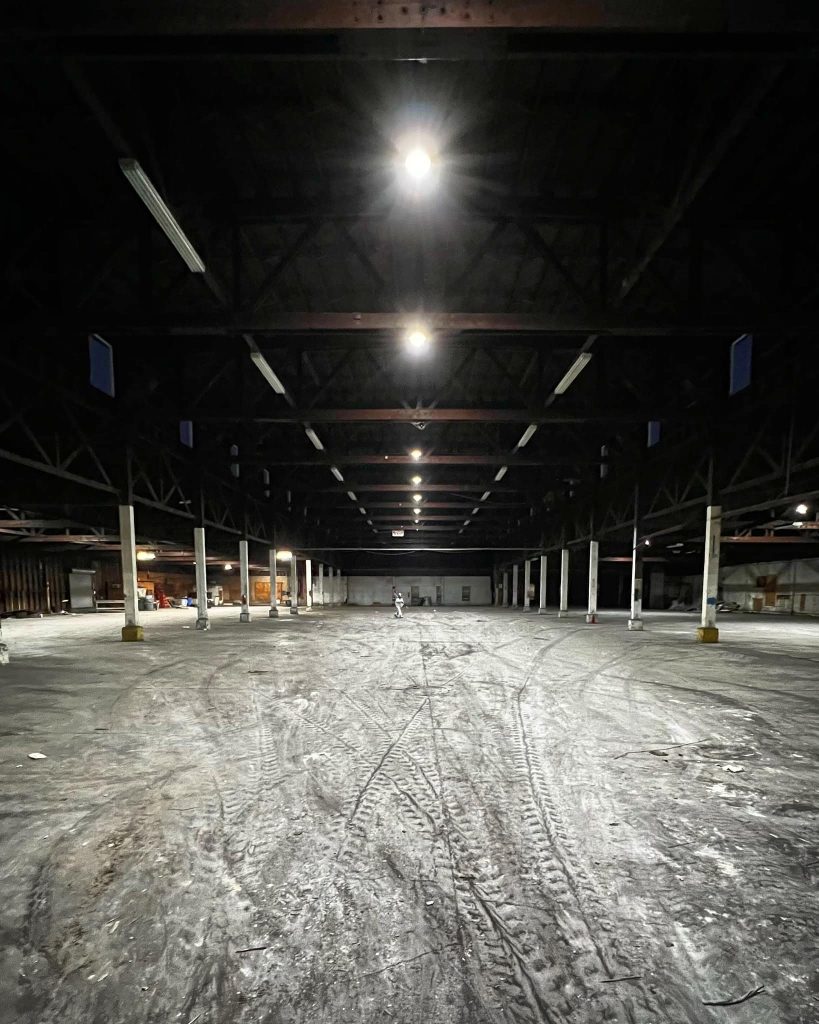
Warehouse Wiring and Lighting


Warehouse wiring refers to the electrical system installed in a warehouse facility. It involves the design, installation, and maintenance of electrical components such as wiring, outlets, switches, lighting fixtures, and distribution panels. Proper warehouse wiring is crucial for ensuring electrical safety, efficient power distribution, and adequate lighting throughout the facility. It’s important to consult with licensed electricians and adhere to relevant electrical codes and regulations when dealing with warehouse wiring to ensure a safe and functional electrical system.
Switching to LED
Switching a warehouse to LED lighting can offer several benefits. LED (Light Emitting Diode) lighting is known for its energy efficiency, longevity, and cost savings. Here are a few advantages of switching warehouse lighting to LEDs:
Energy efficiency
LED lights consume significantly less energy compared to traditional lighting options like fluorescent or incandescent bulbs. This can result in substantial energy savings and lower electricity bills.
Longer lifespan
LED lights have a much longer lifespan than conventional bulbs. They can last up to 50,000 hours or more, reducing the need for frequent replacements and maintenance.
Improved lighting quality
LED lighting provides brighter and more uniform illumination, enhancing visibility and reducing shadows in the warehouse. This can contribute to better working conditions and increased productivity.
Durability
LED lights are robust and durable, making them suitable for warehouse environments that may involve vibrations, temperature fluctuations, or high ceilings. They are less prone to damage and require minimal maintenance.
Environmental friendliness
LED lights are eco-friendly as they do not contain hazardous materials like mercury. Additionally, their energy efficiency helps reduce greenhouse gas emissions associated with electricity production.
When considering a switch to LED lighting, it’s recommended to assess the specific lighting requirements and layout of the warehouse. Consulting with lighting experts or electricians can help determine the optimal LED fixtures, placement, and design for maximum efficiency and effectiveness.
Doc door wiring typically refers to the electrical wiring associated with dock doors in a warehouse or loading dock area. Dock doors are used for loading and unloading goods, and the wiring is an essential part of their operation.
The specific wiring requirements for dock doors can vary depending on the specific setup and features of the doors. However, some common components of dock door wiring include:
Power supply
Dock doors typically require a power source to operate. This involves running electrical wires from a power distribution panel to the dock door location.
Door controls
Wiring is needed to connect the door controls, such as push buttons or key switches, to the door’s motor or operator. This allows for opening, closing, and stopping the door as needed.
Safety sensors
Dock doors often incorporate safety sensors, such as photoelectric sensors or safety edges, to detect obstructions and prevent accidents. Wiring is required to connect these sensors to the door control system.
Communication systems
In some cases, dock doors may be integrated into a larger facility management or security system. This may involve wiring for communication interfaces, such as Ethernet or RS-485, to connect the dock door controls to the central control system.
It’s important to consult with qualified electricians or professionals experienced in dock door installation to ensure proper wiring practices and compliance with electrical codes and regulations. This helps ensure the safe and reliable operation of the dock doors in a warehouse or loading dock environment.
Have Any Questions?
Would you like a free estimate? Please fill out our form and we will be in touch!

